Does Gold Tarnish? Understanding Rust & Tarnishing in Gold Jewellery | Chapelle
Posted on: 30/09/2025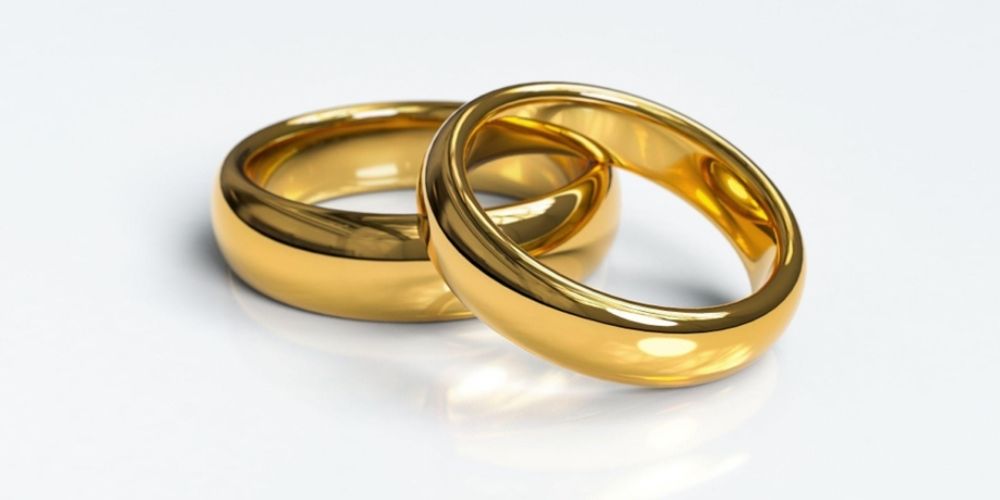
Gold jewellery is an investment, and when you’re paying premium prices for a beautiful piece, you expect it to keep its shine for years to come. However, if you’ve ever noticed your favourite ring looking a little dull or discoloured — or worse, an unsightly green mark left on your skin after you take it off — you’re not alone.
If you’re thinking of purchasing gold, you’re probably wondering: Does gold tarnish? The answer greatly depends on the type of gold jewellery you have. From pure gold to gold plated, white gold, yellow gold, and even rose gold, each reacts differently over time. Read on for a breakdown of which types of gold tarnish (and why), how you can prevent it, and what you can do to restore tarnished pieces back to their former glory. We’ll cover:
●
Does gold tarnish?
●
Why does gold tarnish?
●
Does gold rust?
●
Does gold-plated jewellery tarnish?
○
Does gold-plated brass tarnish?
○
Does gold-plated stainless steel tarnish?
●
What about other types of gold?
○
Does white gold tarnish?
○
Does 9ct gold tarnish?
○
Does 14ct gold tarnish?
○
Does 18ct gold tarnish?
○
Does gold vermeil tarnish?
○
Does bonded gold jewellery tarnish?
○
Does gold filled jewellery tarnish?
○
Does rose gold tarnish?
○
Does platinum tarnish?
●
How to clean tarnished gold
●
How to remove tarnish from gold plating
●
When to seek professional help
● Tips for taking the best care of your gold jewellery
Does gold tarnish?
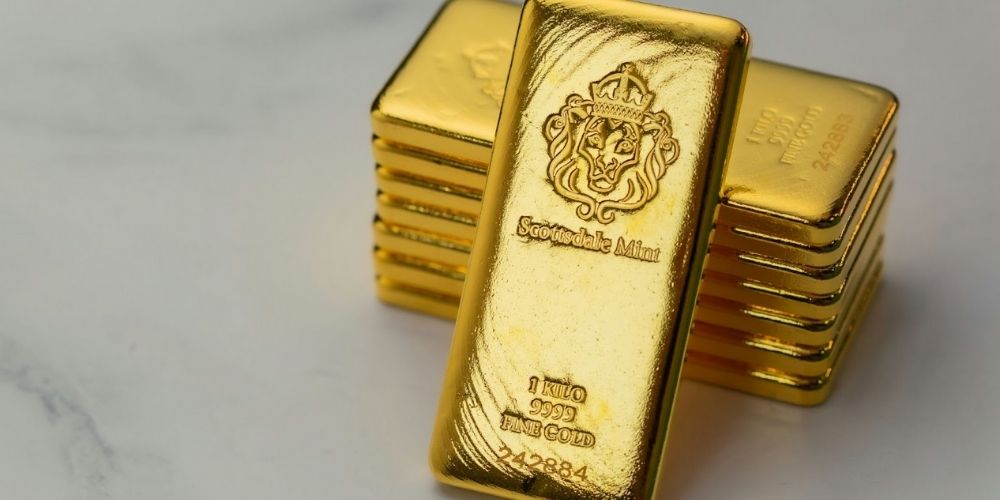
First, the short answer: No, pure gold does not rust or tarnish.
Why does gold tarnish?
So, if pure gold doesn’t tarnish, why do some gold pieces still lose their lustre? The answer lies in the jewellery’s mix of base metals.
As well as being notoriously expensive, pure gold is incredibly soft and malleable, making it vulnerable to scratching and bending, and impractical as wearable jewellery. To combat this, gold is most often mixed with other metals, such as copper, silver, and zinc, to create stronger alloys that are suitable for everyday wear. These metal alloys are the real culprit when it comes to tarnishing.
The lower the gold content in your jewellery, the more
likely it is to react with oxygen, moisture, sweat, or chemicals, leading to
tarnish over time. So while pure gold doesn’t tarnish, most gold jewellery can,
depending on its composition.
Does gold rust?
Rusting is a chemical reaction that happens when certain metals are exposed to moisture. It differs from tarnishing in that only iron and steel are vulnerable to it. Gold, silver, zinc, titanium, and copper cannot rust.
Unlike tarnishing, the rusting process can weaken metal,
causing corrosion and impacting its structural integrity. While tarnishing may
look unsightly, it doesn’t damage a metal or its alloys.
Does gold-plated jewellery tarnish?
But what about gold-plated jewellery? Gold-plated jewellery
is made by electroplating a thin layer of gold onto a base metal — often brass,
titanium, or stainless steel. This gives the jewellery the look of solid gold
at a more accessible price; however, that thin layer is just a surface finish.
In fact, it’s often just two microns thick (two thousandths of a millimetre!).
Over time, exposure to air, moisture, perfumes, and even the skin’s natural
oils can cause that gold layer to fade, flake, or tarnish.
Does gold-plated
brass tarnish?
Absolutely. Brass is a reactive metal and oxidises easily.
When the gold plating wears thin, the underlying brass can darken, turn green,
or discolour your skin. Brass is one of the most common culprits of tarnishing
when it comes to costume jewellery or fashion jewellery.
Does gold-plated
stainless steel tarnish?
Stainless steel jewellery is significantly more resistant to corrosion than brass, but it’s not immune to tarnishing. Its gold plating can still wear down with regular use, especially if exposed to water, sweat, and friction.
The lifespan of gold-plated jewellery depends on the thickness of the plating (measured in microns), the quality of the base metal, and how well you care for it. With gentle wear and proper storage and care, it can stay beautiful for years, but it won’t last forever.
If you’re looking for a longer-lasting alternative to traditional gold plating, you might want to explore bonded gold jewellery.
What about other types of gold?
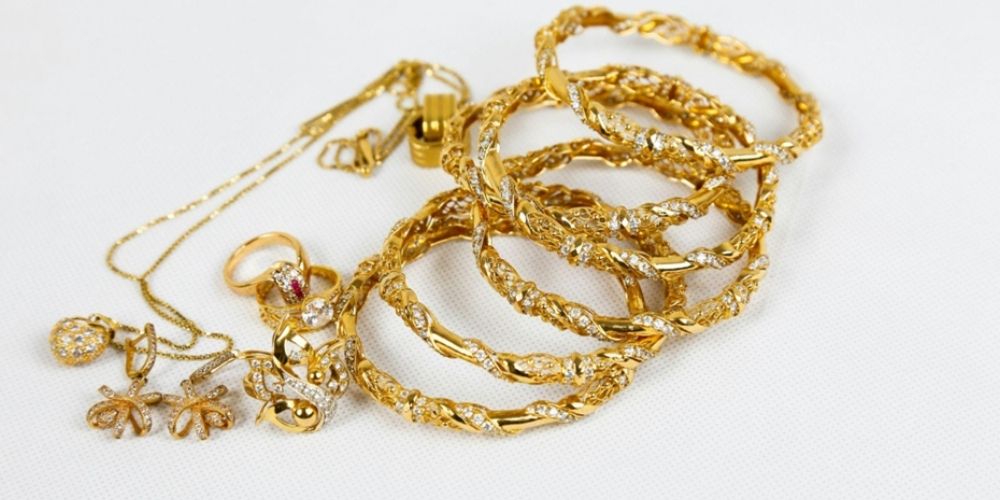
As you’ve probably already gathered, not all gold is created
equal. Different types of gold jewellery have varying levels of purity and
different alloys mixed in, affecting the colour, durability, and susceptibility
to tarnishing. Here’s what to know about each of the different types of gold
jewellery that can be found on the market:
Does white gold
tarnish?
White gold is made by mixing pure gold with white metals like silver and palladium. To achieve its pale hue, it is typically coated in a layer of rhodium, which can wear away over time to reveal the slightly yellowish tone of the gold beneath. Depending on the mixture of metals used, the exposed alloy can sometimes dull or tarnish slightly.
The good news is that many jewellers will offer a rhodium replating service, so your white gold jewellery can be easily restored to
its former radiance. For more tips on how to get the best out of your white
gold pieces, read our white gold care guide.
Does 9ct gold
tarnish?
Yes, 9ct gold can tarnish. As a gold alloy, 9ct gold is made up of around 37.5% pure gold, with the rest being base metals such as silver or copper. The base metals in 9ct gold can tarnish in response to moisture, chemicals, and oxygen.
Although it can be more susceptible to tarnishing with daily
wear, this doesn’t mean that 9ct gold is a bad choice for jewellery. For a pair
of earrings or a necklace that are worn on special occasions,
9ct gold is a perfectly good and cost-effective choice, and with good care will
keep its lustre for years to come.
Does 14ct gold
tarnish?
14k gold can tarnish, but it’s relatively resistant to it.
It typically contains around 58.5% pure gold, making it more durable than 18ct
gold, but less prone to tarnishing than 9ct. Over time, it may show some slight
dulling or surface marks, especially if exposed to moisture and or skincare
products.
Does 18ct gold
tarnish?
With around 75% pure gold content, 18ct is far less prone to tarnishing than other lower carat options. Though the base metals can still tarnish, it does not happen very easily.
If you’re worried 18ct gold is too soft due to its higher
gold content, don’t be. An 18ct gold ring is still durable enough for everyday
wear. Because 18ct gold strikes a great balance between affordability and
durability, it’s a popular choice for engagement
rings.
Does gold vermeil
tarnish?
Yes, gold vermeil can tarnish. Gold vermeil is made by
coating a base metal — usually silver — with a very thin layer of pure gold. In
the UK, a thickness of 3.3 microns is generally considered the standard for
gold vermeil, though this is not strictly regulated and the actual thickness is
often less. As a result, the gold layer may wear away over time, particularly
when exposed to moisture, chemicals, or friction. Once the gold wears off, the
underlying silver can react with air and moisture, leading to tarnishing.
Does bonded gold
jewellery tarnish?
Bonded gold jewellery is created by fusing a layer of gold onto another precious metal, typically silver. Ideally, this gold layer should be at least 10 microns thick, making it more robust than gold vermeil. In practice, however, this thickness can vary significantly and is often thinner than expected. While the industry is gradually moving towards clearer standards for both gold vermeil and bonded gold, these are not yet consistently enforced. For this reason, it’s best to buy from reputable jewellers to ensure quality.
To preserve the shine and longevity of bonded gold
jewellery, avoid abrasive cleaning materials and store it away from harsh
chemicals and moisture.
Does gold filled
jewellery tarnish?
Known in the UK as rolled gold, gold filled pieces feature a
layer of gold which is bonded to a base metal, often brass. This bonding
process makes them more durable and longer-lasting than gold vermeil jewellery.
Rolled gold pieces are suitable for everyday wear, but over time, they may
still show signs of tarnishing and surface wear.
To keep your rolled gold jewellery looking its best, avoid
exposure to oxidising agents, and clean it gently using soft, non-abrasive
materials.
Does rose gold
tarnish?
The pink hue seen in rose gold jewellery comes from its high copper
content, which also makes it durable. Copper is known to oxidise over time, so
yes, rose gold can tarnish. However, this tarnishing is often referred to as a
patina, which many people find adds character to the piece.
Does platinum
tarnish?
Like pure gold, platinum is a noble metal, which won’t tarnish. Unlike gold, however, platinum jewellery is typically alloyed with other non-tarnishing metals, making it one of the only types of jewellery that won’t tarnish. Due to this, it is more expensive than 9ct gold.
How to clean tarnished gold
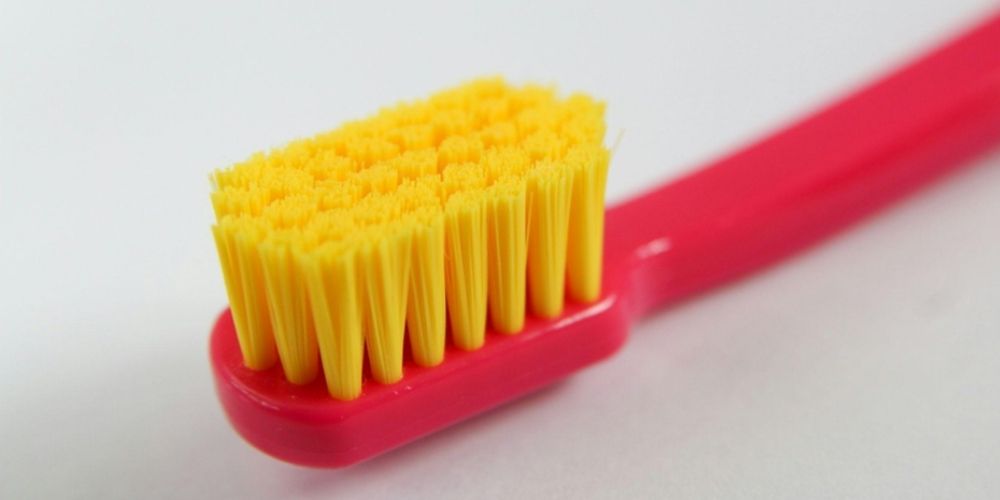
Almost all jewellery can exhibit tarnishing at some point, but the good news is that tarnish can often be very effectively cleaned at home. Here’s how you can safely clean your solid gold pieces (9ct, 14ct, and 18ct gold jewellery) to restore their original sparkle:
What you’ll need:
●
A bowl of warm water
●
A few drops of a mild dish soap (avoid anything
containing bleach or harsh chemicals)
●
A soft-bristle toothbrush — a baby toothbrush will work
well
● A microfibre cloth or jewellery polishing cloth
Step-by-step instructions:
- Prepare your cleaning solution: Fill a small bowl with warm
(not hot) water. Mix in a few drops of the washing up liquid and swirl it
around to create a soapy bath.
- Soak your jewellery: Place your gold jewellery in the bowl and
allow it to soak — about 10-15 minutes is optimal. This will loosen any
dirt, oils, and surface tarnish.
- Gently scrub: Using the toothbrush, lightly scrub your
jewellery, focusing on any crevices where grime can accumulate, like
behind gemstone settings or inside chains.
- Rinse thoroughly: Rinse away all the soap by running the piece
under warm water,
- Dry and polish: Pat your jewellery dry with the cloth, then gently buff it to restore shine. Don’t be too aggressive with your buffing, as this can cause damage.
For heavier tarnishing, you can repeat this process or take
it to a jeweller for a professional cleaning.
How to remove tarnishing from gold plating
Gold-plated jewellery is more delicate than solid gold, and it requires a softer touch. The thin gold layer can wear off if scrubbed for too long, so it’s better to skip the toothbrush and opt for a cotton swab instead. Don’t soak gold-plated jewellery, either. Instead, dampen it with a soft cloth and wipe it down to remove any dirt and surface tarnish. Then, use the cotton swab dipped in soapy water to spot clean.
Always dry your gold-plated jewellery immediately after
cleaning — leaving it wet, even for a short amount of time, can speed up
tarnishing.
When to seek professional help
If your jewellery is heavily tarnished or features delicate gemstones, it’s worth taking it to a jeweller for a professional clean. A jeweller will often use an ultrasonic or steam-based cleaning method, which will remove deep grime without damaging the materials.
Tips for taking the best care of your gold jewellery
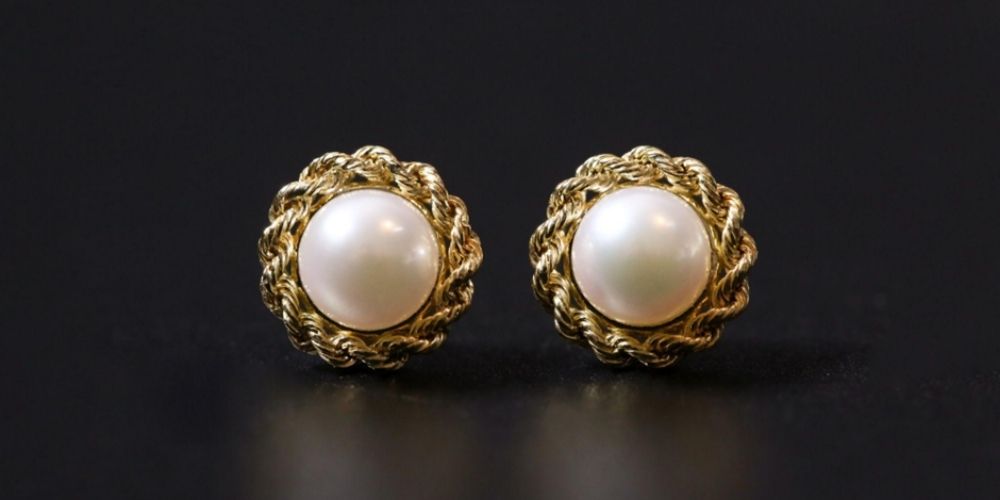
Here are some easy tips for extending the life of your jewellery:
●
Store it
properly: Keep gold jewellery in a cool, dry place, ideally in a pouch or
soft-lined jewellery box. Store gold pieces separately so they don’t scratch
one another. Consider keeping silica gel packets in your jewellery box to
reduce moisture.
●
Avoid moisture
and chemicals: Remove jewellery before swimming, showering, and exercising.
Remove rings when washing hands. Avoid contact with perfumes, hairsprays, body
oils and lotions. Wear gloves or remove jewellery while using cleaning
products.
●
Take off
jewellery before sleep: Sleeping in jewellery can lead to damage. We also
sweat when we sleep, which can speed up tarnishing.
● Clean pieces regularly: Gently clean everyday jewellery as often as once a month, and occasion jewellery as needed. If you want, you can take them to a jeweller for a professional cleaning once a year.
Gold jewellery is made to shine, but over time, exposure to elements, skincare products, and even your skin’s natural oils will cause virtually all gold pieces to tarnish at some point. Fortunately, tarnishing isn’t the end of the story, and with a little care and the right cleaning techniques, you can keep your favourite gold pieces as stunning as the day you bought them.
Here at Chapelle, we offer a handy repair service, including professional cleaning of gold items and re-rhodium plating of white gold and platinum pieces. For more information on how to take care of your jewellery, have a look at our repair guides.
If you’re ready to
explore, shop our collection of affordable luxury jewellery, including fashion
jewellery, bridal
jewellery, engagement rings, earrings, necklaces and charms, and watches, as well as a range of beautiful gifts.
